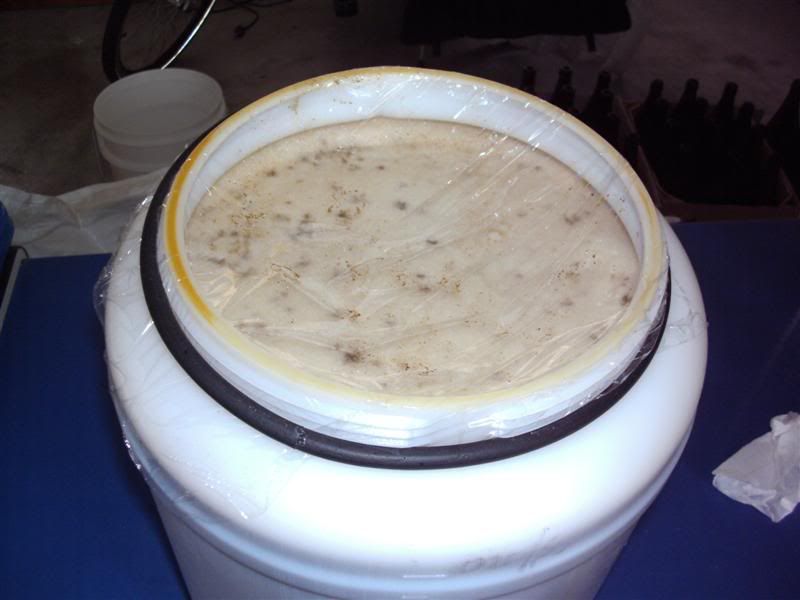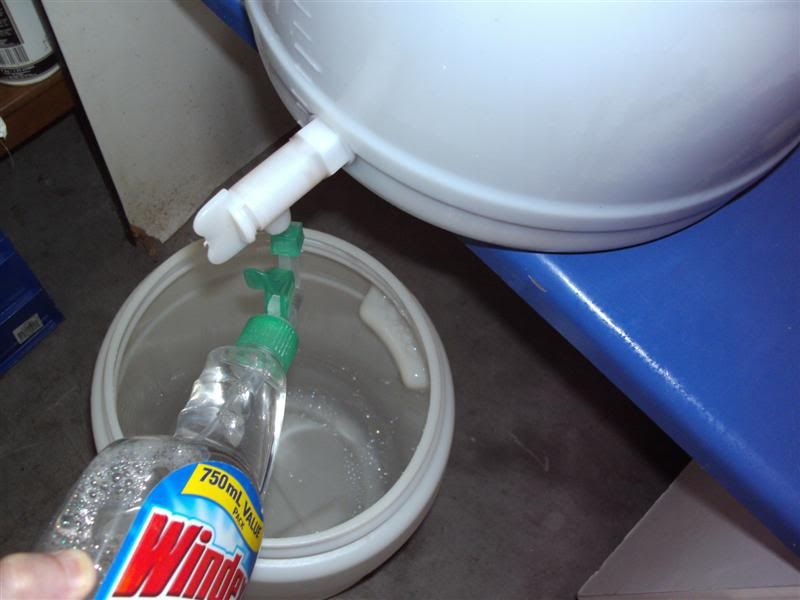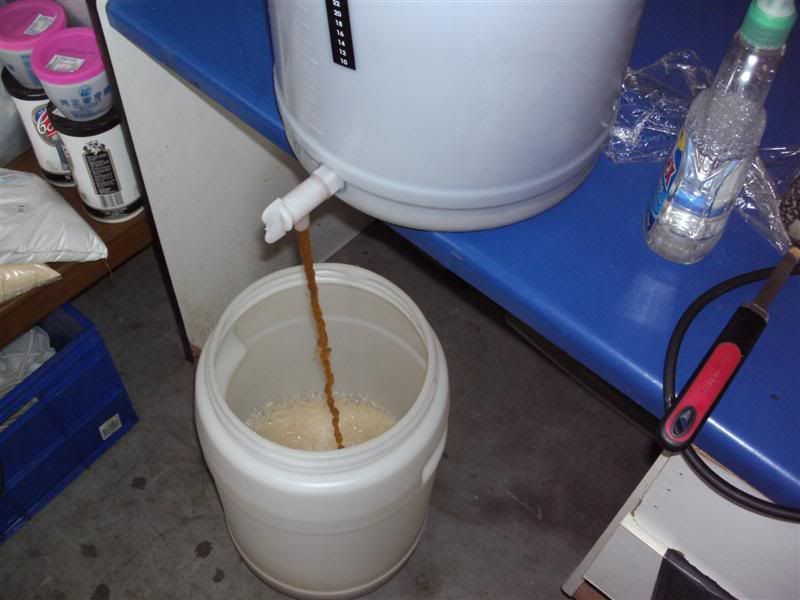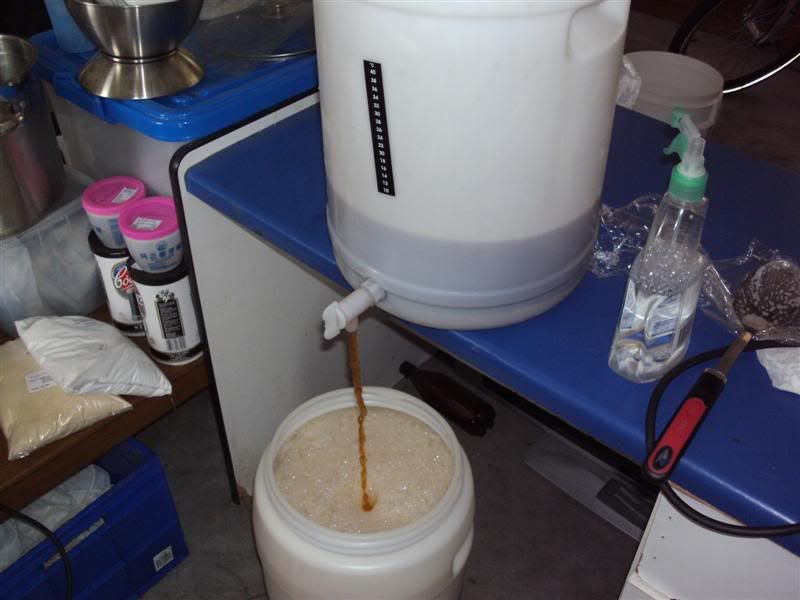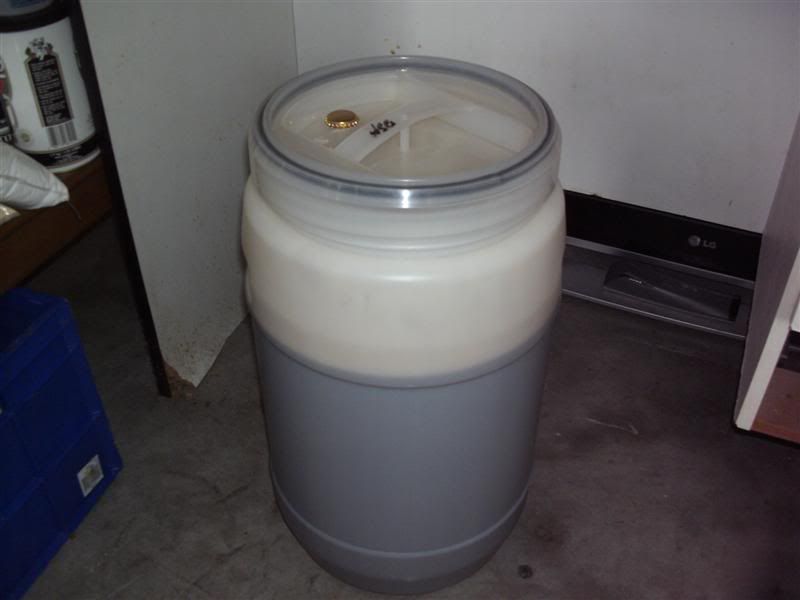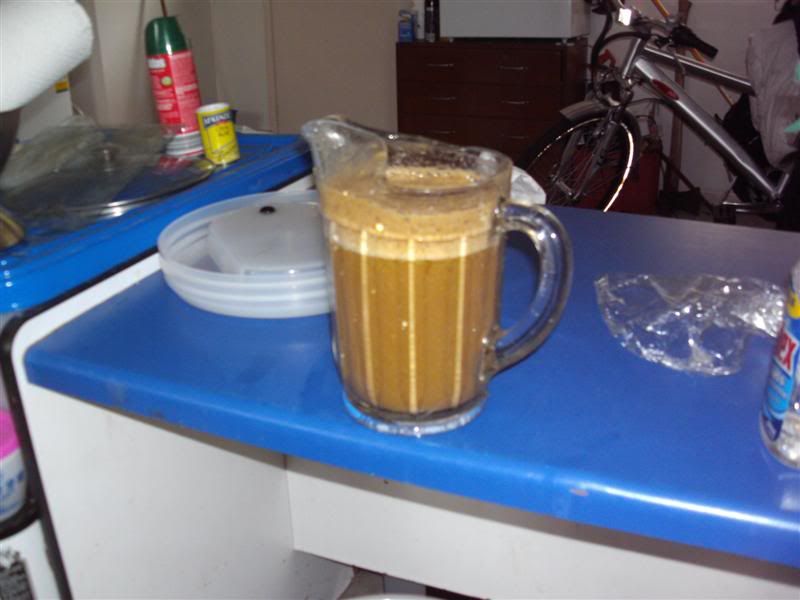This used to be a very common method of brewing in the UK, Fullers did it until they got their new vessels a couple of decades ago, and some still do it such as Brakspear (at Wychwood). The idea is to start the fermentation in an upper vessel then, after 16 hours drop the fermenting wort into a lower vessel, leaving behind unwanted proteins, hop materials etc and also give the wort a good second aeration to promote a healthy fermentation. I read about this also in the new Jamil and White "yeast" book, so decided to give it a whirl. I couldn't really see that 16 hours was going to make all that much difference, but I'll try anything once, honey.

I have brewed a red ale:
4500 Perle
300 Caraaroma
200 Carared
64 degrees 60 mins
18 Northern Brewer 60 mins
90 Fuggles flowers NZ 10 mins
No chill, pitched next day - 1469 from previous yeast cake. I used my 25L fermenter to kick things off, around 24L in the FV. (note I slightly increased the brew length from my normal 23L to take account of the fact that some volume would be left in the 'top' vessel after the drop)
After 16 hours in the primary at around 17° we are getting yeast:
Place on counter, spoon the top crop of yeast into a sanitized 30L FV and position it on floor below, starsan everything including tap.
Start the drop: I had to do it in two stages due to foaming, during the rest I covered both FVs with starsanned lids. Stop dropping when some turbid stuff started coming through.
If you look carefully at the bottom of the FV you will see a definite 'hard' layer of crap, maybe the fermentation "curdles" it or something? It looks like all the cold break could be down there.
End result, a normal quantity of wort in the FV plus a jug of absolutely disgusting looking crud that looked like something you would pump out of a restaurant grease trap.
So now I've got a fermenter of cleansed wort with some pure fresh yeast in it, nicely aerated (twice) and bedded down at 19 degrees. Can't wait for this one. I reckon the jug contains break and crap from the original bit of yeast cake as well. I'll top crop out of primary in a day or so for the next brew. Top cropped yeast is pure, as opposed to using sludge which as you can see contains a lot of unwanted stuff.
The main thing is that all that crud has been removed from the brew - amazing how it compacted down into a distinct almost firm layer at the bottom. I'm amazed that a mere 16 hours can produce such results.

I can well see why the UK breweries used this method. If this produces a better, cleaner, faster fermenting ale I'll do it all the time from now on.

